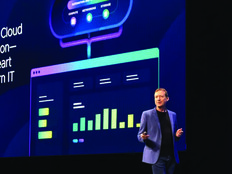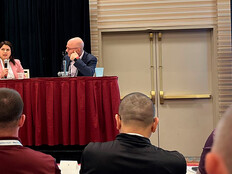A “Constantly Updating” Cloud Services Authorization Program
Automation allows agencies to continuously monitor compliance, quickly find potential risks and reduce time spent on manual reviews.
“The previous approach of reviewing periodic assessments simply could not keep up with today’s fast-moving threat environment,” DeRusha says.
Automating as much of the authorization process as possible will ultimately enable the government to procure more secure, innovative solutions as they come to market — instead of years later, he says.
By automating as much as 80% of security controls, agencies will be able to generate compliance documentation more efficiently and receive real-time updates on security posture.
“At the click of a button, I can find out the current state of security of a particular system,” says Jonathan Alboum, federal CTO at ServiceNow and former CIO of the Department of Agriculture.
“The reason the automation piece is so critical is that the manual and paper-based process took a long time,” Alboum says. “When we automate, we not only reduce the time to complete assessments, we improve the accuracy, we reduce human error and we create a system that is constantly updating.”
Working with Industry to Apply Automation Best Practices
GSA established four FedRAMP 20x working groups for industry stakeholders, emphasizing the importance of industry collaboration in shaping the framework. The working groups will focus on areas such as continuous monitoring and applying automation practices used in other regulated sectors.
“Closer alignment between government and technology providers will be essential to keeping pace with innovation while meeting evolving compliance expectations,” Alboum says.
The biggest challenge agencies may face will be ensuring their personnel have the tools, training and other resources to shift from the current labor-intensive, task list-driven process to a faster, largely automated approach.
“GSA must also take steps to encourage consistent implementation across agencies, as well as reciprocity with the Department of Defense,” DeRusha says.
The transition will involve adopting new tools, automating security checks and changing the mindset around compliance from viewing it as a one-time task to an ongoing effort.
“It is a big adjustment, but it will make security stronger and improve operational efficiency,” DeRusha says.
WATCH: NSF is growing a national artificial intelligence innovation ecosystem.












